Trees Birds Mammals Fish Amphibians Reptiles
Wild Algarve
Bookshop
Tubaria conspersa (Pers.) Fayod - Felted Twiglet
Phylum: Basidiomycota - Class: Agaricomycetes - Order: Agaricales - Family: Inocybaceae
Distribution - Taxonomic History - Etymology - Identification - Culinary Notes - Reference Sources
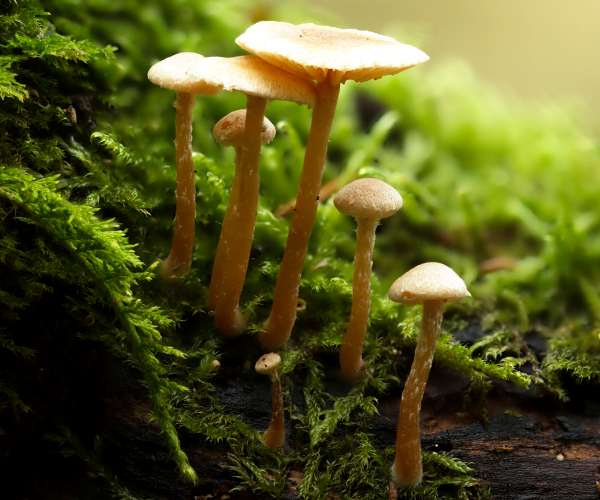
This pale russet-brown little toadstool is hygrophanous and becomes more ochraceous as it dries out. What differentiates it from several similar Tubaria species is its finely scaly cap and the persistent fleecy white scales at the margin.
Distribution
Tubaria conspersa is fairly common and widespread throughout Britain and Ireland. The Felted Twiglet occurs also in most parts of northern and central mainland Europe.
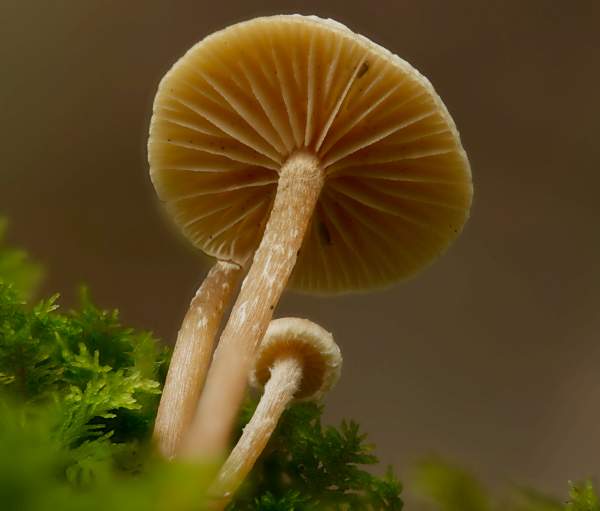
Taxonomic history
In 1800 Christiaan Hendrik Persoon described this little mushroom and gave it the scientific name Agaricus conspersus (at a time when gilled fungi were generally placed into the genus Agaricus, since largely redistributed across many other newer genera).
It was Swiss mycologist Victor Fayod (1860 - 1900) who, in 1889, transferred this species to its present genus, thereby establishing its currently-accepted scientific name as Tubaria conspersa.
Synonyms of Tubaria conspersa include Agaricus conspersus Pers., Naucoria conspersa (Pers.) P. Kumm., and Inocybe conspersa (Pers.) Roze.
Etymology
Tubaria is a small genus of about 20 species worldwide. The genus name may refer to a pipeline or connection.
The specific epithet conspersa is derived from the Latin adjective conspersus or consparsus meaning sprinkled, scattered or strewn - a reference to the common sight of scattered groups of these twiglet toadstools.
Identification guide
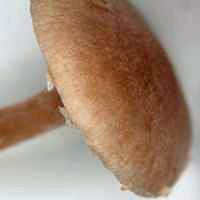 |
Cap
The cap, initially convex and then flattened, 0.8 - 2.2cm in diameter, is minutely scaly with velar remnants, which also hang from its margin ragged. When young and fresh the caps are pinkish to russet brown but, being hygrophanous, they turn more ochraceous with age or in prolonged dry weather. |
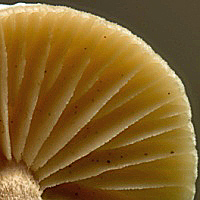 |
Gills
The distant gills, which are much the same colour as the cap, are adnate or slightly decurrent.
Stem
Stems are cylindrical, 3-5cm long and 2-3mm in diameter, scaly when young but becoming smoother as they age; stem colour is as the cap, and the stem flesh is pale brown. There is no stem ring.
|
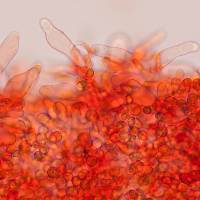 |
Cystidia
Cheilocystidia (on gill edges) and pleurocystidia (on gill faces) are narrowly cylindrical and up to 72 µm long.
|
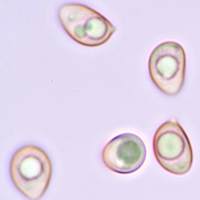 |
Spores
Ellipsoidal, smooth, 7-10 x 4-6µm.
Spore print
Ochre brown.
|
Odour/taste |
Not distinctive. |
Habitat & Ecological role |
In leaf litter beneath deciduous trees and bushes or on well-rotted hard wood; also on wood chip used as a mulch in parks and gardens. |
Season |
Late summer and autumn in Britain and Ireland. |
Similar species |
Tubaria dispersa has a smoother cap, smaller spores, and is always associated with Hawthorn trees and bushes. |
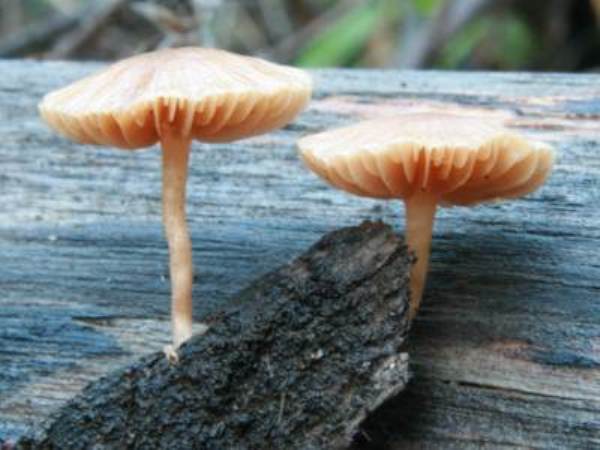
Culinary Notes
This little mushroom is generally considered inedible.
Reference Sources
BMS List of English Names for Fungi
Dictionary of the Fungi; Paul M. Kirk, Paul F. Cannon, David W. Minter and J. A. Stalpers; CABI, 2008
Taxonomic history and synonym information on these pages is drawn from many sources but in particular from the British Mycological Society's GB Checklist of Fungi.
Acknowledgements
This page includes pictures kindly contributed by David Kelly,
Top of page...
Fascinated by Fungi. Back by popular demand, Pat O'Reilly's best-selling 450-page hardback book is available now. The latest second edition was republished with a sparkling new cover design in September 2022 by Coch-y-Bonddu Books. Full details and copies are available from the publisher's online bookshop...